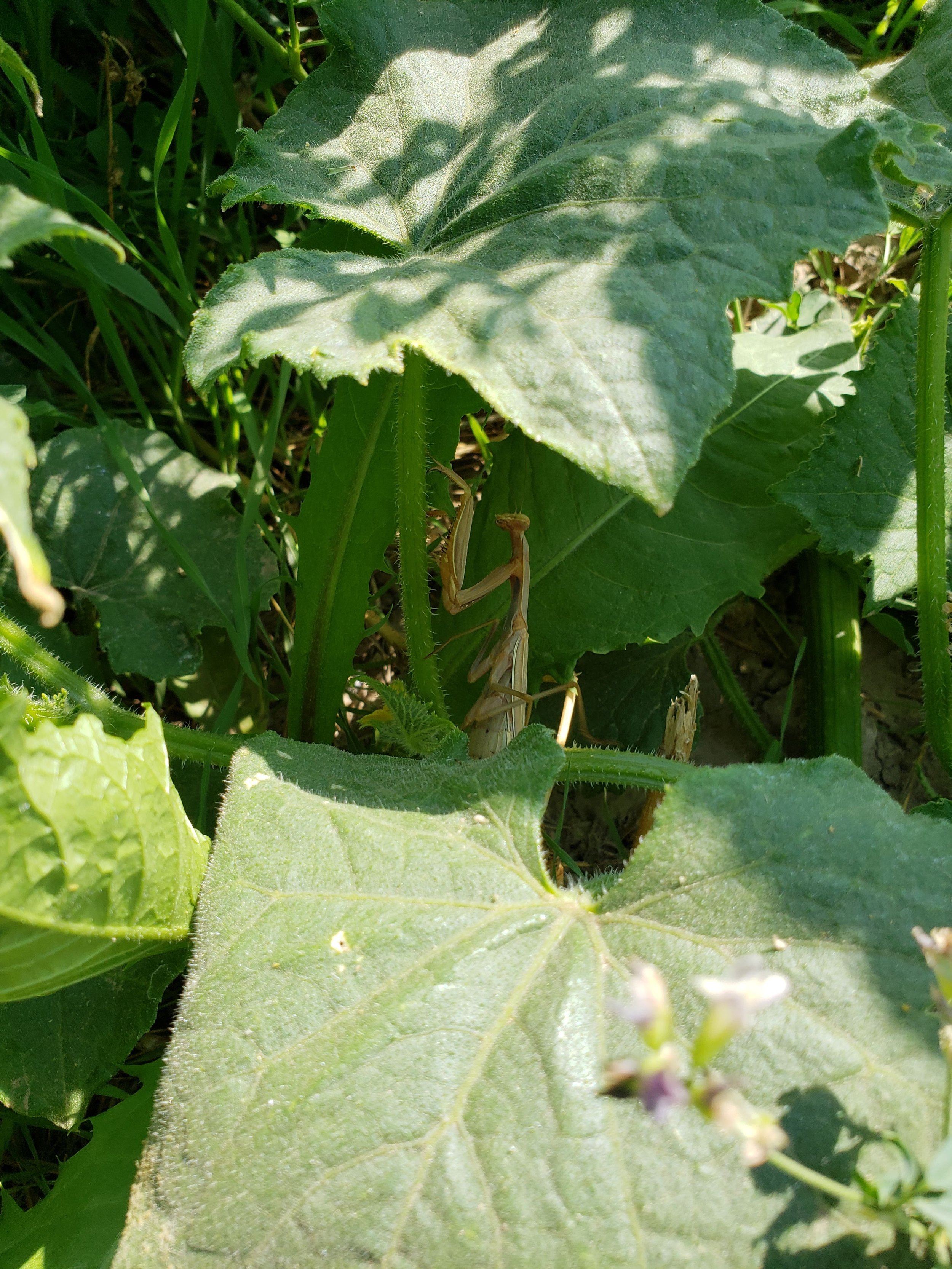The Garden Hunter
Garden Week Twenty-Two 9/10/2018
The Garden Hunter

Found this guy hunting in the garden this weekend.
Last week, while repairing the mailbox, I thought a branch had fallen from the tree onto my hat. So, I swiped it to the ground only to find that it was a praying mantis. Wow, I thought, I hadn’t realized praying mantis lived in Idaho. In the past week, I have seen praying mantis in Mooreland, Chubbuck as well as here in Blackfoot. Far too many to be a coincidence. Spending summers as a child with family in Florida, I often saw praying mantis, but I do not recall them here in Idaho.
The curious me started asking questions: Are praying mantis native to Idaho? What kind of mantis are these? What do they eat? Are they good for the garden? Why am I seeing them now?
Turns out that mantes are not native to Idaho and have been documented migrating north into Idaho since the late 1980’s. According to an interview by Dianna Troyer of the Idaho State Journal, 8/29/1997, with Robert Anderson, an Idaho State University biology professor, who said of the migrating mantis; “Who knows when or how, but through a series of mutations, variant forms of this species have adapted to cold conditions." I think this is really interesting because the praying mantis is typically found in warmer areas, and most often in tropical regions.
The species he was referring to, and the we see here in Idaho, is the Stagmomantis Californica. This mantis is typically found in shrubland or desert environments, which is why they are also found from Mexico to Arizona, California, Colorado, New Mexico and Western Texas regions. Like most mantis species, they can adapt to their surroundings, allowing them to change from greens to browns and to mimic their surroundings.

Mantis_religiosa_(egg_case) By © Hans Hillewaert, CC BY-SA 4.0, httpscommons.wikimedia.orgwindex.phpcurid=3980582
Most mantes are ambush hunters and do not have a specific prey, eating everything from; flies to grasshoppers, moths, crickets, mosquitoes, other mantis, birds, frogs and other small amphibians. Of the birds preferred by Mantis, the hummingbird seems to be a favorite. Because they are not specific, they will eat beneficial creatures as well as pests. So, it is up to you if they are beneficial bugs, or not. If you want to see something amazing, try observing a praying mantis on the hunt. They are especially equipped with 3D vision allowing them to see even the slightest of movements. Coupled with their lightening face reflexes and grip, they are able capture the fastest of prey. Cool fact, praying mantis have exceptional hearing which allows them to hear the ultrasonic sound that bats make, helping them to avoid being eaten.
The mantis, unlike many bugs, has three stages to its life cycle; eggs, nymphs, and adult, skipping the larva stage completely. When the weather warms, the nymphs will climb out of the egg case. Fragile nymph survivors learn what they can hunt as they grow, leaving them vulnerable to predators. For those that survive, they will shed their exoskeletons many times before reaching maturity. Currently, female and male mantis are looking to mate, which why I am seeing them everywhere! Later this fall, the female mantis will lay its eggs. Whether male or female, the adult mantis will not live through the winter. While I am not sure if I have been seeing the male or female of the mantis, if you keep an eye out, you may just see one too!